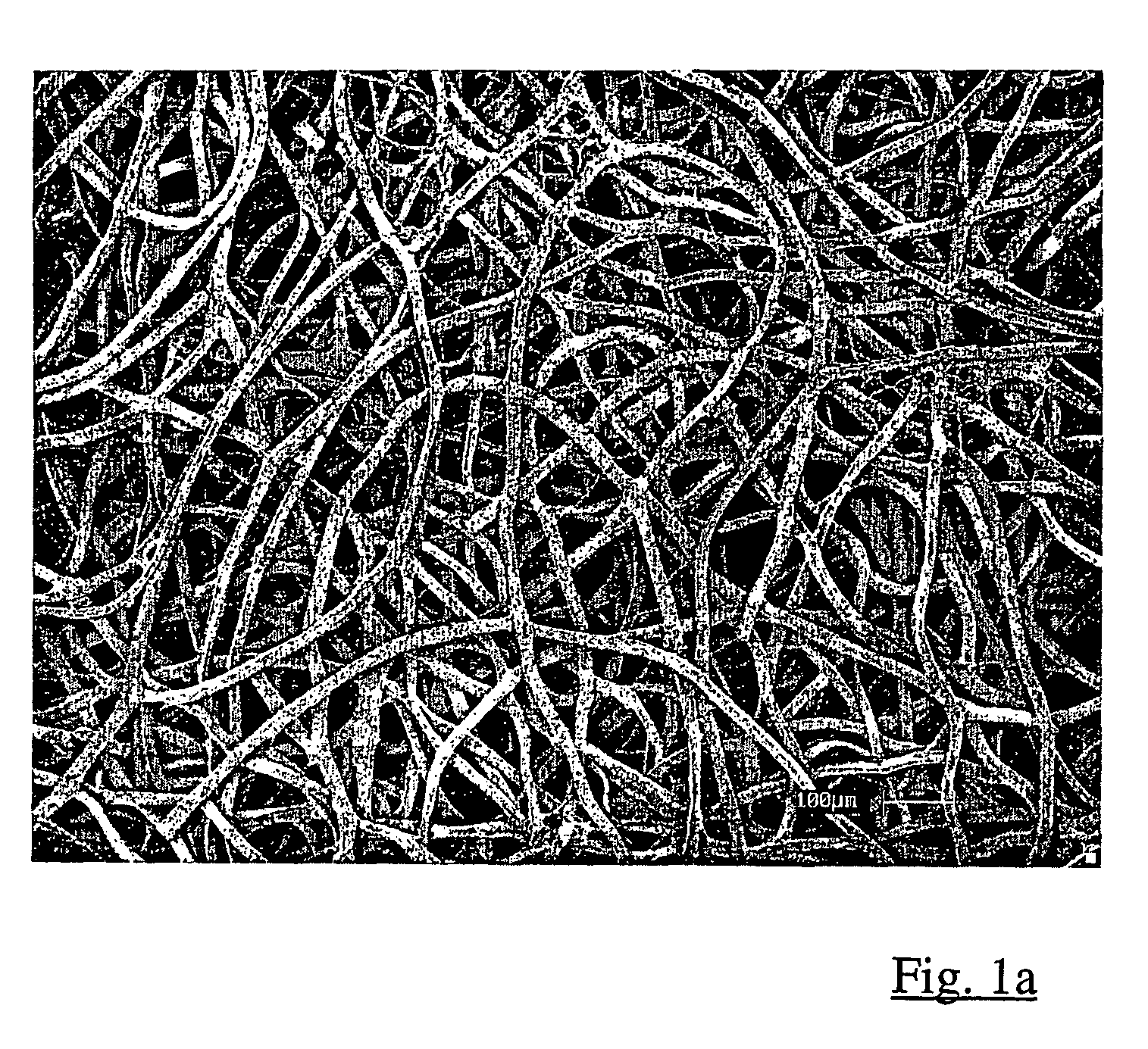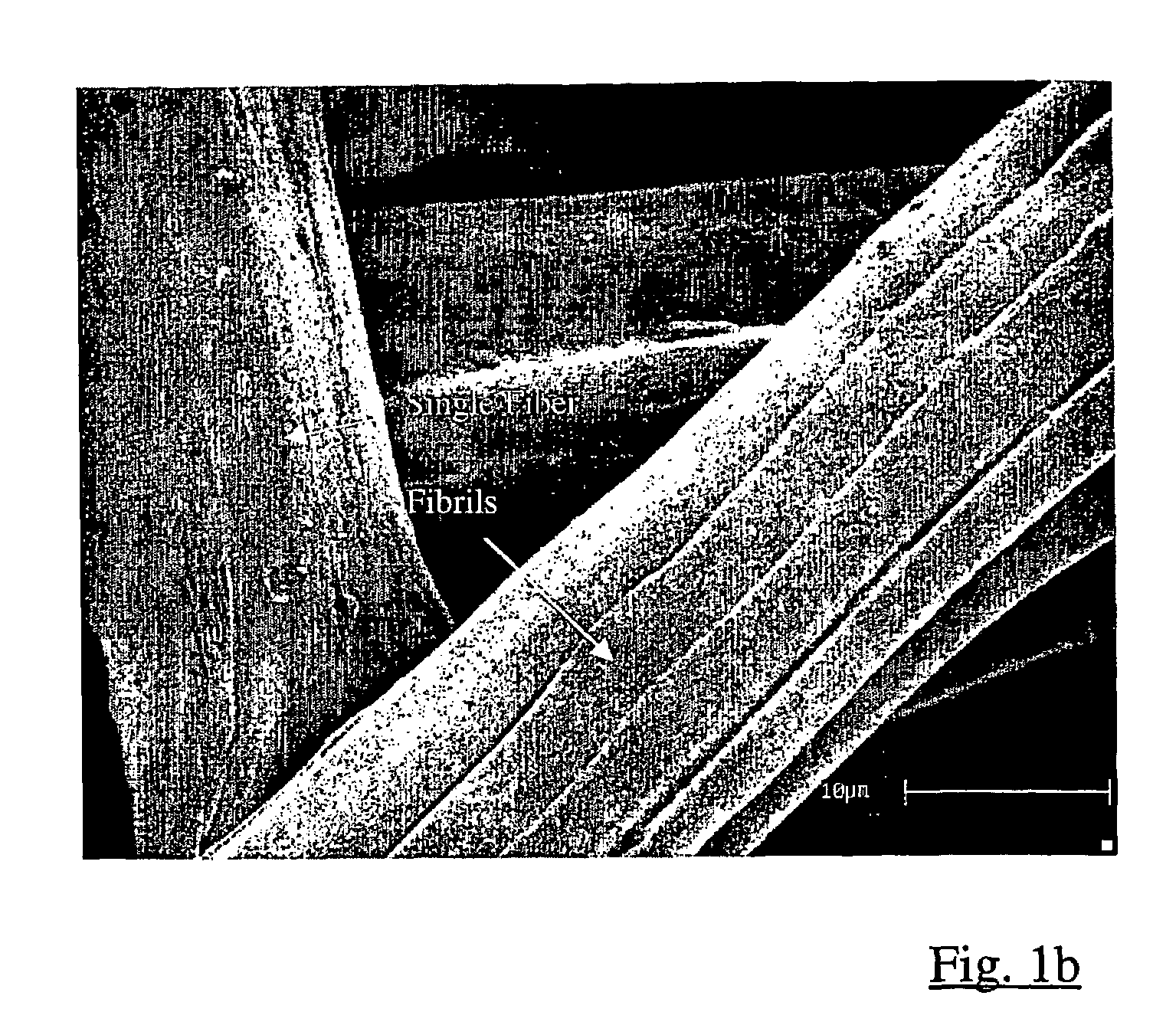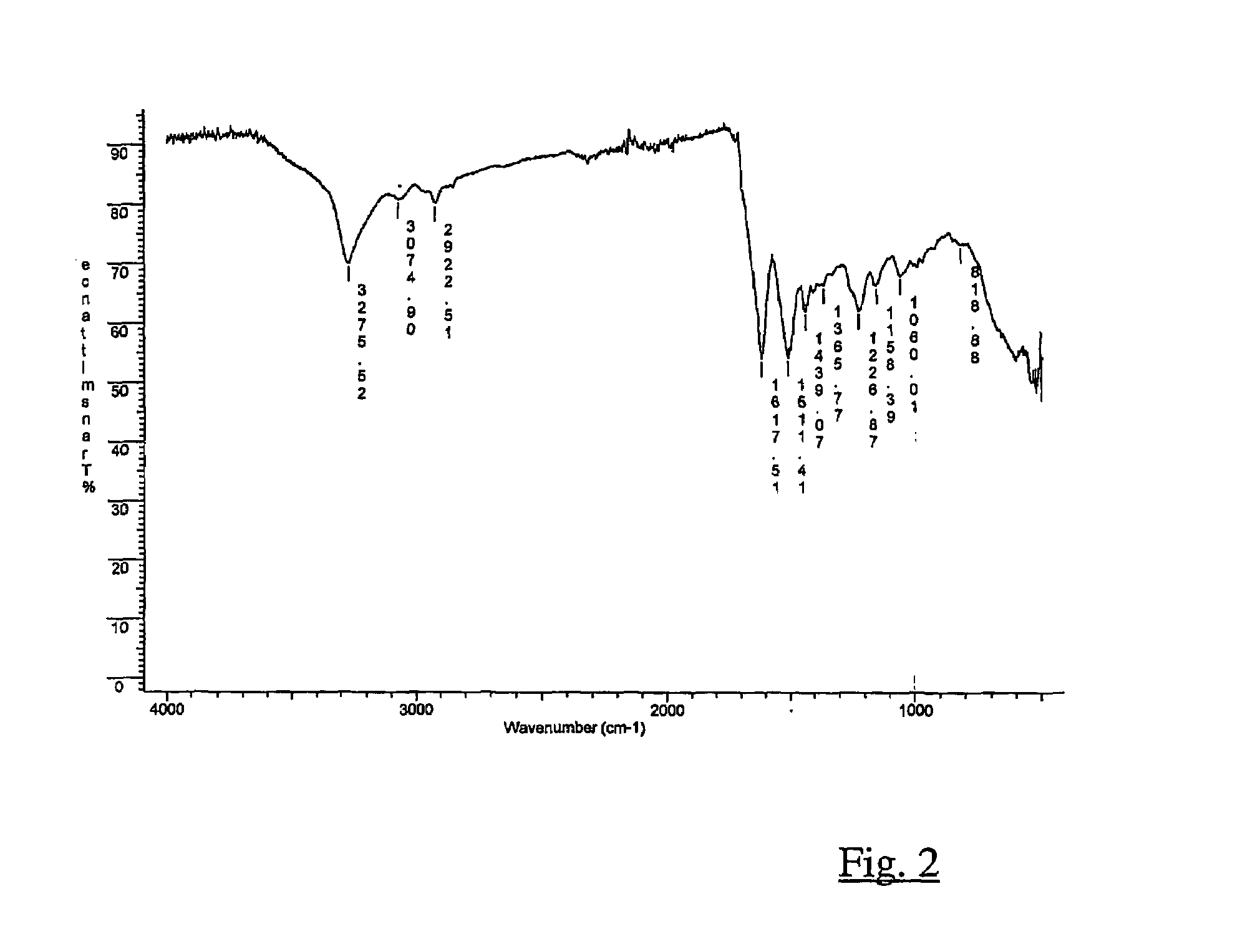Method for the preparation of a non-woven silk fibroin fabrics
- Summary
- Abstract
- Description
- Claims
- Application Information
AI Technical Summary
Problems solved by technology
Method used
Image
Examples
example 1
[0054]In the following example 0.5 g of degummed silk fibroin (from cocoon, textiles or waste silk) was brought into 100 ml of a water solution of formic acid.
[0055]The resulting solution was poured onto clean glass or polystyrene dishes and then stirred at 100 rpm for 30 minutes in order to obtain homogeneously distributed fibers.
[0056]The resulting solution was left under atmospheric conditions in order to remove the formic acid.
[0057]Once the formic acid had been removed by evaporation at room temperature, the resulting silk fibroin fabrics were washed several times with double distilled water and next dried inside a vacuum oven at 50° C.
[0058]In order to increase the solubility of the silk fibroin, calcium chloride was used.
[0059]Table 1 as follow reports the characteristics of some of the silk fibroin solutions used.
[0060]As can also be seen from the data of Table 1, the process in accordance with the present invention allows the silk fibroin to be dissolved.
[0061]
TABLE 1SilkFo...
example 2
[0071]A three-dimensional fibroin fiber fabric was prepared according to the following method.
[0072]A first layer 200 μm thick with a mean pore diameter of 15 μm was coupled to a second layer having 1200 μm thick with a mean pore diameter of 40 μm. The two layers were prepared separately and joined together applying a suitable pressure forming a fabric with a total thickness of 1.5 mm.
[0073]The material was sterilized exposing for about 30 minutes each of its two sides to ultraviolet rays emitted by bactericidal lamps contained inside a closed box at room temperature; afterwards it was cut into 2.7×2.9 cm square pieces that were each laid inside the square wells (8.6 square centimetres each) of 8-well Multidish plates (Nunc Ltd.).
[0074]Normal human dermal fibroblasts were isolated from an intra-operative biopsy (the patient was informed and consenting) by means of trypsin digestion (trypsin solution 0.25% p / v) of the minced dermal layer and were then numerically expanded in standard...
PUM
| Property | Measurement | Unit |
|---|---|---|
| Temperature | aaaaa | aaaaa |
| Fraction | aaaaa | aaaaa |
| Fraction | aaaaa | aaaaa |
Abstract
Description
Claims
Application Information
 Login to View More
Login to View More - R&D
- Intellectual Property
- Life Sciences
- Materials
- Tech Scout
- Unparalleled Data Quality
- Higher Quality Content
- 60% Fewer Hallucinations
Browse by: Latest US Patents, China's latest patents, Technical Efficacy Thesaurus, Application Domain, Technology Topic, Popular Technical Reports.
© 2025 PatSnap. All rights reserved.Legal|Privacy policy|Modern Slavery Act Transparency Statement|Sitemap|About US| Contact US: help@patsnap.com



